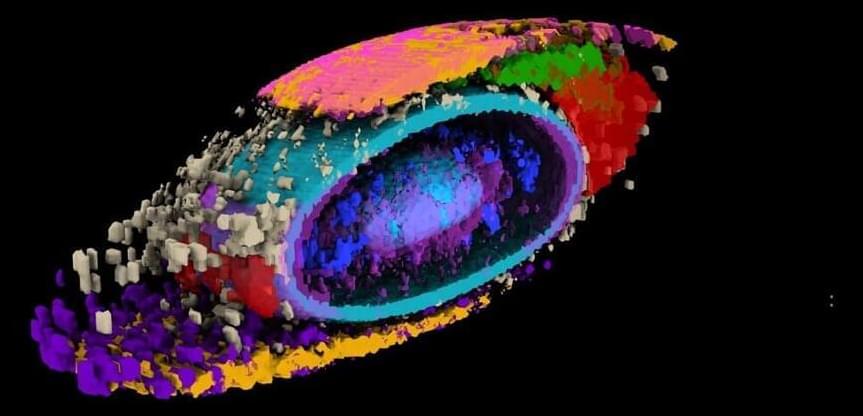Pictures of paul adrien maurice dirac.





Yann LeCun, Meta’s chief artificial intelligence (AI) scientist shared his thoughts on ChatGPT.
ChatGPT has been making headlines worldwide, but not all are impressed. Yann LeCun, Meta’s chief artificial intelligence (AI) scientist, had some harsh words for the program in an hour-and-a-half talk hosted by the Collective Forecast. This online, interactive discussion series is organized by Collective.
“In terms of underlying techniques, ChatGPT is not particularly innovative,” said LeCun on Zoom last week.
NurPhoto/Getty Images.
What exactly did he have to say? ZDNET attended the session and reported on it.

This is still the beginning of what AI can possibly do.
IBM’s Watson supercomputer is working wonders in an area where OpenAI’s ChatGPT does not have much to offer, the stock market. An exchange-traded fund (ETF) is using the power of artificial intelligence (AI) to balance its portfolio and has done pretty well for itself this year, ETF.
PhonlamaiPhoto/iStock.
ChatGPT responded that the stock market was too hard to predict and that it did not have access to live stock data. However, ETF Managers Group, in partnership with a fintech firm Equbot has been using AI to pick holdings in the $102 million AI-powered Equity ETF (AIEQ) since 2017. The fund has doubled the returns on the Vanguard Total Stock Market ETF (VTI) this year.

Researchers stress that the classifier is “not fully reliable.”
Two months after OpenAI introduced ChatGPT to the public, students flocked to the AI tool to write their assignments, exams, software codes, and whatnot. This resulted in universities beginning to crack down on the usage of ChatGPT. A few science journals even banned the use of the chatbot in their journals.
In what sounds like a solution, OpenAI themselves have released a tool designed to detect if the text has been written by artificial intelligence. In a blog post on Tuesday, OpenAI elaborated on the tool that has been trained to figure out if the text is written by a human or generated by AI, including ChatGPT.
LIONEL BONAVENTURE/AFP via Getty Images.
“We recognize that identifying AI-written text has been an important point of discussion among educators, and equally important is recognizing the limits and impacts of AI-generated text classifiers in the classroom,” the researchers wrote in a blog post. “We have developed a preliminary resource on the use of ChatGPT for educators, which outlines some of the uses and associated limitations and considerations.”

The first time a language model was used to synthesize human proteins.
Of late, AI models are really flexing their muscles. We have recently seen how ChatGPT has become a poster child for platforms that comprehend human languages. Now a team of researchers has tested a language model to create amino acid sequences, showcasing abilities to replicate human biology and evolution.
The language model, which is named ProGen, is capable of generating protein sequences with a certain degree of control. The result was achieved by training the model to learn the composition of proteins. The experiment marks the first time a language model was used to synthesize human proteins.
The YouTuber has received nearly 70 million views for his video.
MrBeast, the popular YouTuber, has helped 1,000 people see again by offering them free surgery. A trained surgeon completed the procedure, and the joy of those who underwent surgery knew no bounds. The entire event video was uploaded on Sunday and has so far gathered nearly 70 million views.
To clarify, the YouTuber isn’t promising some radically new treatment that allows blind people to see. Instead, it is a simple 10-minute procedure used to treat cataracts and is well-tested with quantifiable benefits. Before we get into the details, here’s where it can be used.

AI startup unicorn OpenAI is now ready to make money off its popular AI chatbot released in November.
OpenAI has launched its first subscription plan for ChatGPT, opening up the popular AI model for business use just two months after its public launch.
The new plan, called ChatGPT Plus and announced in a company blog post on Wednesday, will charge subscribers $20 for monthly use of ChatGPT’s tools. Users will get priority access to ChatGPT “during peak times,” faster responses, and “priority access to new features and improvements,” the company wrote. The subscription is only available initially in the United States and will roll out to a waitlist first.
AI unicorn OpenAI is ready to make money off its popular AI chatbot released in November.

A new survey of 1,554 consumers worldwide about their recent chatbot experiences was released today. The respondents gave their chatbot experiences an average rating of 6.4÷10 or 64%. 50% of consumers said they often feel frustrated their interactions with chatbots and nearly 40% of these interactions were said to be negative. The survey was commissioned by Forrester Consulting on behalf of Cyara.
In general, consumers view chatbots favorably, as they provide 24/7 support, faster response times, and autonomy. As a result, chatbots typically rank higher than speaking directly with an agent or any other digital channel of communication.
Nearly 40% of consumer experiences with chatbots are negative.